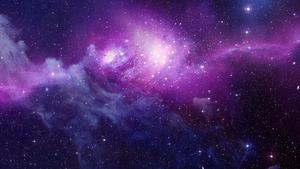11870930
Topic 6 Part 2- Variation/Classification
Description
Flashcards by finn squires, updated more than 1 year ago
More
Less

|
Created by finn squires
almost 8 years ago
|
|
Resource summary
| Question | Answer |
| What is variation? | Variation is the differences within the same species. The two types are genetic and environmental variation. |
| How do different genes cause variation? | The characteristics of plants and animals are determined by the genes inherited from their parents by gametes. The combining of these genes causes variation e.g. eye colour. |
| How does the environment cause variation? | The environment causes differences within the same species e.g. a suntan. |
| How do mutations cause variation? | Mutations are changes to the sequence of DNA, hence changing the protein it codes for. Most mutations have no effect but rarely they result in a new phenotype. If the environment changes an the new phenotype is suited to it, it can become common throughout the population by natural selection causing variation. |
| What is the theory of evolution by natural selection? | Organisms have to compete for limited resources so those with the most suitable characteristics are more likely to survive, reproduce and pass on their genes. Those with less suitable characteristics will be less likely to survive so less likely to pass on their genes. Over time, beneficial characteristics become more common in the population and the species evolves. |
| What are the four causes of extinction? | Environment changes too quickly, new predators kill all of species, they compete with another species for food, a catastrophic event occurs e.g. volcanic eruption. |
| What is the process of selective breeding? | 1. isolate and breed the organisms with the favourable traits. 2. select the best of the offspring and breed them together. 3. continue this process over generations, eventually all the offspring will have the desired trait. |
| Give five examples of when selective breeding is used? | Animals to produce more meat/milk, crops with disease resistance, dogs with good, gentle temperaments, plants with decorative flowers. |
| What are the negatives of selective breeding? | By keeping breeding the 'best' which are closely related it reduces the gene pool (inbreeding) and alleles, leads to health problems and less chance of disease resistant alleles. |
| What is the process of genetic engineering? | A useful gene is isolated (cut) from a genome using enzymes and inserted into a vector (virus/bacteria plasmid). When the vector is introduced to the target organism the useful gene is inserted into its cells. Can be inserted into embryos. |
| What are the main uses of genetic engineering? | Producing insulin, GM crops, sheep milk, inherited diseases. |
| What are the three pros/cons of GM crops? | pros: Increased yield, more nutrients, no problems in areas. cons; reduces biodiversity (affects wild flowers and insects), not safe (dont fully understand the effects yet), may cause resistance in unwanted plants e.g. a superweed. |
| What are the two main ways how plants can be cloned? | 1. tissue culture - A few plant cells are put in a growth medium with hormones, grow into clones of parents. Very quick, little space, all year, to preserve rare plants. 2. cuttings - take cuttings from good plants then plant them to produce clones of parent plant. Quick, cheap, older and simpler method. |
| How can you make animal clones using embryo transplants? | 1. sperm and egg cells taken from favoured animal. Then sperm used to artificially fertilise an egg cell. The embryo develops and splits to form clones. 2. these clones can be implanted into other organisms which will produce all genetically identical offspring. |
| What is adult cloning? | 1. remove nucleus from an egg. 2. the nucleus of an adult body cell is removed and inserted into an egg cell. 3. the egg cell is stimulated into rapid growth by an electric shock. 4. the embryo is implanted into an adult female. It grows into a genetically identical copy (clone) of the original cell as it has the same genetic information. |
| What are the three ways in which fossils are formed? | 1. from gradual replacement by minerals - things like teeth bones and shells dont decay easily so last a long time when buried. they are eventually replaced by minerals as they decay forming rock like substamce shaped like the original hard part. surrounding turns to rck ut fossil stays distinct. 2. from casting and impressions - fossils formed when organism is buried in a soft material like clay which later hardens around it and the organism decays, leaving a cast. also footprints leave impressions. 3. from preservation in places were no decay happens - in amber and tar pits there is no oxygen or moisture so decay microbes cant survive. glaciers too cold, peat bogs too acidic. |
| what are the groups of classification in 1700s? | Kingdom, phylum, class, order, family, genus, species. |
| How does speciation occur? | Speciation is the development of a new species. Speciation occurs when populations of the same species become so different that they can no longer successfully interbreed to produce fertile offspring. |
| What is the three domain system? | Archaea - organisms in this domain are primitive bacteria. Bacteria - true bacteria e.coli Eukaryota - fungi, plants, animals and protists |
Want to create your own Flashcards for free with GoConqr? Learn more.
